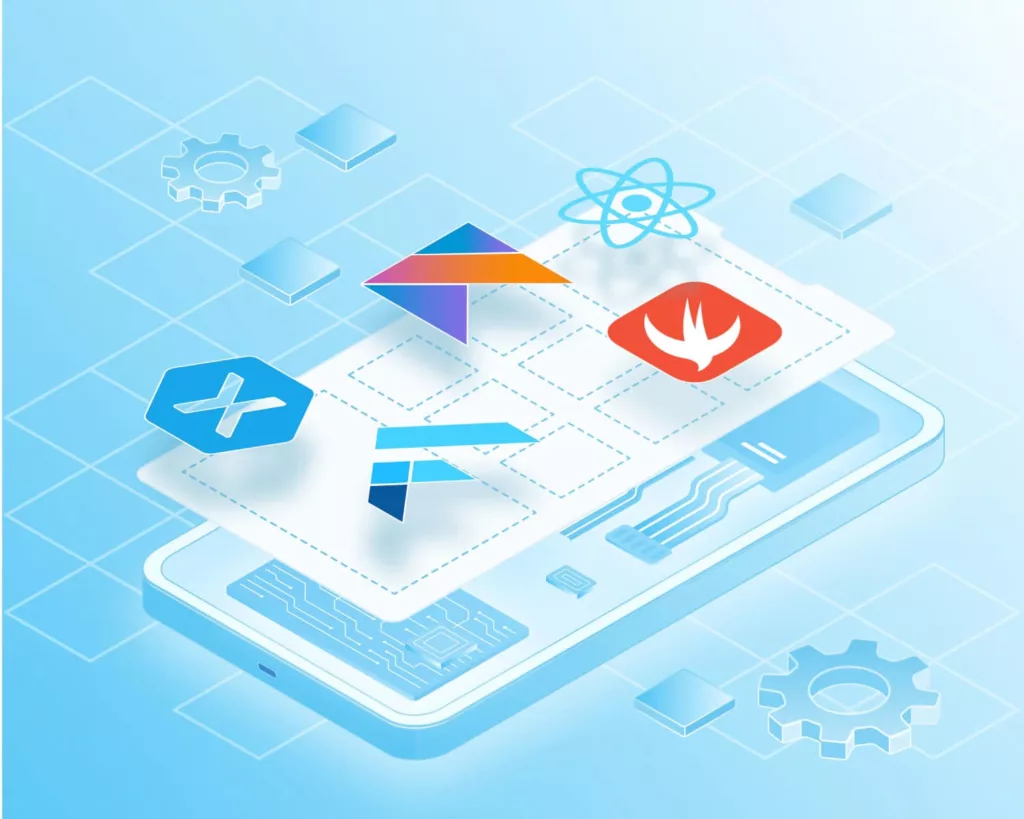Table of Contents
What is the Application Development Lifecycle?
The application development lifecycle refers to the comprehensive process that involves an app’s creation, deployment, and maintenance. This lifecycle is designed to ensure that each app meets the required functionality, performance, and user satisfaction standards. The lifecycle consists of several app development stages, each crucial for the successful completion of the project.
The application development lifecycle can be visualized as a structured framework that guides the project from conception to post-launch. By following this framework, development teams can systematically tackle the various aspects of app development, ensuring that no critical component is overlooked. This structured approach helps in identifying potential challenges early, allocating resources efficiently, and maintaining a clear focus on the project goals throughout the development process.
These application development stages include ideation, planning and analysis, UX/UI design, development, testing, deployment, and post-development. Each stage is interdependent and contributes to the overall success of the app. Understanding and meticulously executing each stage ensures that the final product is not only functional and reliable but also provides a satisfying user experience.
Key Advantages of the Application Development Lifecycle

Understanding and implementing the application development lifecycle brings numerous benefits:
- Enhanced Quality:
One of the primary advantages of following the application development lifecycle is the significant enhancement in quality. This lifecycle includes a dedicated testing stage where the application undergoes rigorous testing to identify and resolve bugs and issues. Multiple types of testing—such as unit testing, integration testing, system testing, and user acceptance testing—are conducted to ensure the app performs reliably and meets predefined standards. By systematically testing the application at various stages, developers can catch and fix issues early, resulting in a more stable and high-quality product.
- According to a study by Tricentis, software failures cost the U.S. economy $1.7 trillion in assets in 2017. Rigorous testing within the application development lifecycle helps mitigate these failures.
- Research indicates that 48% of users uninstall apps because of bugs or crashes. Ensuring quality through thorough testing can significantly reduce uninstalls.
- Improved Efficiency:
Implementing a structured development lifecycle streamlines the entire process, making it more efficient. Each phase is well-defined, with clear objectives and deliverables. This structured approach helps in planning and resource allocation, ensuring that development efforts are focused and organized. By following this methodical process, teams can avoid unnecessary delays and redundant work, leading to faster completion times and more efficient use of resources. This improved efficiency not only speeds up the development process but also allows for better project management and coordination among team members.
- According to the Project Management Institute, organizations that use structured project management methodologies waste 28 times less money because their strategic initiatives are more successful.
- Atlassian reports that teams using agile methodologies and structured workflows see a 25% improvement in productivity.
- Better User Satisfaction
A critical focus of the application development lifecycle is on user experience (UX) and user interface (UI) design. During the UX/UI design stage, designers create wireframes and prototypes to ensure the app is intuitive and visually appealing. This user-centric approach leads to the development of an application that is easy to use and meets the users’ needs and preferences. By prioritizing the user experience, developers can create apps that engage users, encourage longer usage times, and foster positive feedback, ultimately leading to higher user satisfaction and loyalty.
- A report by Forrester indicates that a well-designed user interface can increase conversion rates by up to 200%, and a better UX design can yield conversion rates up to 400%.
- Research from the Interaction Design Foundation shows that 70% of users abandon an app because of poor user experience. Prioritizing UX/UI design can prevent this loss.
- Cost-effectiveness
Following the application development lifecycle can significantly reduce costs associated with web app development Singapore. Early identification and resolution of issues during the planning, design, and testing stages prevent costly fixes in later stages. By catching problems early, the development team can address them before they become larger, more expensive issues. Moreover, a well-defined lifecycle helps in efficient resource allocation, avoiding unnecessary expenditures and optimizing the use of available budget. This cost-effective approach ensures that the project stays within budget while delivering a high-quality product.
- According to a study by the Consortium for IT Software Quality (CISQ), the cost of fixing a bug after release is up to 30 times higher than during the design phase.
- CIO magazine reports that implementing efficient development processes can reduce software development costs by up to 30%.
Overview of the 7 Stages of the Application Development Lifecycle

Each phase of the app development lifecycle plays a vital role in ensuring the final product’s success. Here are the seven crucial app development stages:
Ideation Stage
The ideation stage is the initial phase where the app concept is born. During this stage, brainstorming sessions help to outline the app’s purpose, target audience, and core features. The goal is to create a clear and viable idea that aligns with market needs and business objectives. Market research is often conducted to identify gaps and opportunities. By the end of this stage, there should be a detailed app concept that includes the key functionalities and a rough project scope. This is the first of the crucial app development phases.
Planning and Analysis Stage
In the planning and analysis stage, the app development team conducts a detailed analysis of the requirements. This includes defining the app’s technical specifications, setting milestones, and allocating resources. A well-structured plan is created to guide the project through subsequent app development stages. This stage involves:
- Requirements Gathering: Documenting functional and non-functional requirements.
- Feasibility Study: Assessing the technical, economic, and operational feasibility of the app.
- Project Planning: Developing a roadmap with detailed timelines, tasks, and resource allocation.
Application UX/UI Design Stage
Designing the user experience (UX) and user interface (UI) is critical for the app’s success. This stage involves creating wireframes, mockups, and prototypes to visualize the app’s look and feel. The focus is on making the app intuitive and visually appealing, ensuring a seamless user experience. Key activities include:
- Wireframing: Developing basic layouts to represent the app’s structure.
- Prototyping: Creating interactive prototypes for early user testing and feedback.
- UI Design: Finalizing the visual elements, including colors, typography, and graphics.
Application Development Stage
The application development stage is where the actual coding takes place. Developers use the chosen programming languages and frameworks to build the app’s features and functionalities. This stage is iterative, with continuous testing and feedback loops to refine the app. Key steps include:
- Frontend Development: Building the user interface and client-side logic.
- Backend Development: Developing server-side components, APIs, and databases.
- Integration: Ensuring all components work together seamlessly.
Among the phases of app development, this is the core phase where the app’s functionality is built.
Testing Stage
In the testing stage, the app undergoes rigorous testing to identify and fix bugs. Various testing methods, including unit testing, integration testing, and user acceptance testing, are employed to ensure the app performs as expected across different devices and scenarios. The main objectives are:
- Functionality Testing: Verifying that all features work as intended.
- Performance Testing: Ensuring the app performs well under various conditions.
- Security Testing: Identifying vulnerabilities and ensuring data protection.
- User Acceptance Testing (UAT): Validating the app with real users to ensure it meets their needs and expectations.
Application Deployment Stage
Deployment is the phase where the app is released to the public. This involves submitting the app to app stores (like Google Play and Apple App Store) and ensuring it meets all the necessary guidelines and requirements. Proper deployment ensures that users can easily download and use the app. Key steps include:
- App Store Submission: Preparing and submitting the app for review.
- Deployment Planning: Coordinating the release to ensure a smooth launch.
- Monitoring: Setting up analytics and monitoring tools to track the app’s performance post-launch.
Post-Development Stage
The post-development stage involves ongoing maintenance and updates. User feedback is collected to identify areas for improvement, and regular updates are rolled out to fix issues and introduce new features. This stage ensures the app remains relevant and functional over time. Key activities include:
- Bug Fixes and Updates: Regularly updating the app to fix bugs and improve performance.
- Feature Enhancements: Adding new features based on user feedback and market trends.
- User Support: Providing support to users for any issues they encounter.
By meticulously following each of these app development stages, development teams can ensure that the final product is robust, user-friendly, and capable of meeting evolving user expectations. This structured approach not only enhances the quality of the app but also improves efficiency, user satisfaction, and cost-effectiveness throughout the development process.
Frequently Asked Questions
What is the application development process?
The application development process encompasses the entire lifecycle of an app, from initial ideation to post-launch maintenance. It includes stages such as ideation, planning, design, development, testing, deployment, and ongoing updates.
What are the challenges during the application development stage?
Challenges during the application development stage can include:
- Technical Difficulties: Issues with coding, integration, or platform compatibility.
- Resource Constraints: Limited time, budget, or manpower.
- Changing Requirements: Evolving user needs or market conditions that require adjustments to the project.
Should any steps in the application development be skipped?
Skipping steps in the application development lifecycle can lead to significant issues, such as poor app performance, bugs, and user dissatisfaction. Each phase plays a critical role in ensuring the final product is robust and user-friendly. Therefore, it’s essential to follow the complete lifecycle for the best results.
In conclusion, understanding the application development lifecycle and following a structured lifecycle is crucial for creating a successful application. Each stage, from ideation to post-development, ensures that the app meets the highest standards of quality and user satisfaction.